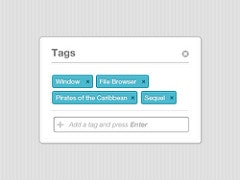How will artificial intelligence (“AI”) impact our world? There are knowledgeable people talking up the potential positive uses of AI and there are knowledgeable people voicing concern over the potential problems. On the positive side are articles generally oriented towards business efficiency gains, of which IBM’s Watson is a widely seen example.
Many companies are looking for a better way to help manage the explosive growth files and documents and they are hoping that AI and Watson can benefit them. The rate of growth is exponential and that is creating increased user search times and poor results accuracy – inefficient. AI might help users find the information that they are looking for, but Watson is going to have to get to know each user and know each user very well first.
Finding the right information has become very difficult as not everyone stores files with the same identifying tags. Sometimes the tags are incorrectly applied or not provided at all. That process, generally known as indexing, meta data tagging or applying file attributes, is predominantly a manual, human process today. Using AI, when documents are created or received, they will be placed into one big folder where the AI engine can figure out what the document is and automatically apply the identifying tags.
The AI engine interprets the contents of the file, such as a subject, section titles, word combinations and patterns, etc. This is probably pretty straight forward for most files, but there are a few exceptions. Scanned documents have to be converted back into readable text, which doesn’t always produce 100% accurate results. Maps, charts, CAD drawings and photographs may pose some problems as well given the lack of text in the file. Therefore, some files could be successfully tagged, while others may need human input.
A more difficult hurdle is getting the AI engine to understand the intent of the provider, which can determine how the file is stored and who should have access to it. We have all seen that the same file can end up in many different “folders”. The file may initially have been intended as support for a specific client and stored in the client folder. However, that same file might later become support for a special project and therefore a copy stored in a project folder. Same file, different user intent.
Another example of intent deals with applying the appropriate security. Two documents might have almost identical content, but one is meant for review by the finance department and one is the final and is to be sent to investors. The AI engine can determine who provided the document and the security rights of that provider. But the AI engine would need to know user intent to set the proper security and access rights.
The AI engine might be able to determine appropriate tagging at a high accuracy level but, with a little human intervention, it can be almost perfect. AI is coming and we will figure out how to use it to make work more efficient and make user’s lives easier. Watson will need to know the users to make it all work, like understanding that some users always put the mustard in the fruit drawer????.
Millennia Group provides workflow and document management solutions and will continue to explore ways to help its clients get more organized and more efficient. www.mgdocs.com, 630-279-0577, info@mgdocs.com 
